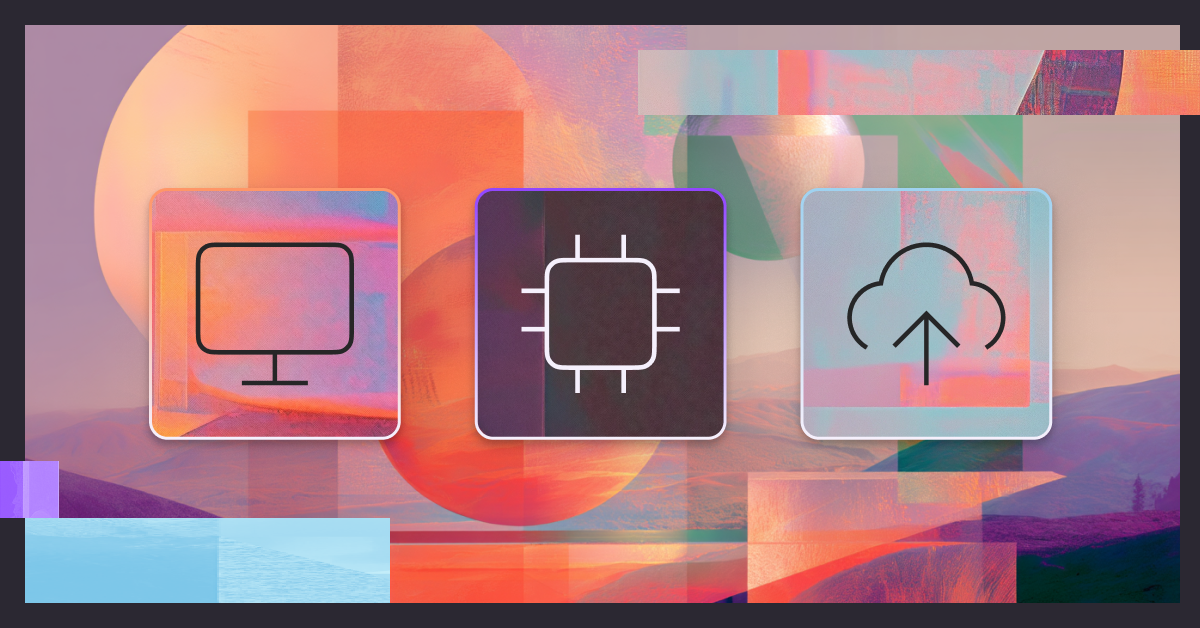How to Create Effective Blog Outlines
An effective blog outline helps organize your thoughts and ideas, enhances readability, boosts SEO, and keeps your readers engaged.

77% of internet users report reading blog posts regularly, and a recent HubSpot report showed businesses that leverage blogging reported 13x more ROI than those that didn't.

One key requirement for blogging at scale is creating an effective blog outline. Its importance is often underestimated, particularly by novice bloggers or those rushing to produce content.
An effective blog outline helps organize your thoughts and ideas, enhances readability, boosts SEO, and keeps your readers engaged. If you’re working with freelancers or multiple team members, an outline serves as a clear roadmap and makes it easier to delegate writing tasks. Blog outlines can also be easily incorporated into content calendars, aiding in long-term planning and scheduling.
"A blog post outline or skeleton lets you get clear on the structure before you even try to write. If you're 'not a natural writer' but still need to create content, it's magical." -Brittany Berger, writer
Let's explore the importance of a blog outline in more detail, including the key components to include and a step-by-step process for creating one. We'll also provide valuable tips for maintaining structure and coherence throughout your blog writing.
The Importance of a Blog Outline
Have you ever tried writing something without an outline? It's a difficult process that feels like groping around in the dark.
"Often when you’re having trouble writing, it’s because your focus and direction are not specific enough. This is why creating an outline and having questions that are meant to be answered throughout whatever you’re writing is absolutely essential to being clear and concise." - Lilly Hikind, writer
An effective outline, in contrast, saves time by keeping you focused and organized during the writing process and serves as a roadmap for your writing. It helps you structure your content logically, ensuring each point flows seamlessly into the next. This not only makes your blog post more readable but also more engaging.
With an outline, you'll also gain the following important elements of a streamlined writing process:
- Improved cohesiveness. When you plan your blog post with an outline before you start writing, you can make sure all supporting subheadings and examples work to reinforce the central theme of your article throughout. This is much harder to do on the fly and often entails a lot of backtracking.
- Framework. Let's face it—the blank page is daunting. However, an outline gives you a springboard for your writing process. Your outline is the scaffolding; with it in place, you just need to build around it to flesh out the piece more fully.
The best part is that outlining is easier than ever with the help of AI. In fact, data shows that 28% of bloggers use AI to write outlines, as it helps speed up the process and can act as a springboard for generating a first draft.
"Spend twice as much time on your research and outline, and you’ll spend half as much time on your writing and editing," said Brooklin Nash of Beam Content.
How a Blog Outline Can Improve SEO and Readability
A well-structured blog outline can significantly boost both SEO and readability.
For search engines, an outline helps organize content logically, making it easier for crawlers to understand and index the article. This can improve rankings for relevant keywords. For readers, a clear outline enhances the user experience by providing a roadmap of the content, allowing them to quickly grasp the main points and navigate to sections of interest.
A structure lets you plan where to place your focus keywords and related phrases, which is essential for SEO. By strategically placing these elements, you can improve your chances of ranking higher on search engines.
It also often leads to increased time on page and reduced bounce rates, further benefiting SEO. Blog outlines help writers create more coherent, comprehensive content by ensuring all key points are covered and flow logically, resulting in higher-quality articles that are more likely to earn backlinks and shares.
Say you’re writing a blog post titled "The Benefits of Yoga for Beginners." An outline for this post might look like:
- Introduction to Yoga
- Physical Benefits
- Mental Health Benefits
- Improved Flexibility and Balance
- Stress Reduction
- Better Sleep
- Getting Started with Yoga
This outline improves SEO in several ways:
Keyword optimization: Each section heading is an opportunity to include relevant keywords. For instance, "benefits of yoga" and "yoga for beginners" can be naturally incorporated into the headings.
Content structure: Search engines favor well-structured content. The outline provides a clear hierarchy, translating to the proper use of H1, H2, and H3 tags in the final post. This helps search engines understand the content's organization.
Comprehensive coverage: The outline ensures you cover various aspects of the topic, which can help your post rank for a wide range of related search queries. For example, someone searching for "yoga and stress reduction" might find your article.
Improved user experience: A well-structured post is easier to read and navigate, which can lower bounce rates and increase time on page. These are positive signals to search engines.
Featured snippets: Clearly defined sections make it easier for search engines to pull relevant information for featured snippets, potentially improving your visibility in search results.
Internal linking: The outline makes planning internal links to other relevant content on your site easier, which is beneficial for SEO.
Key Components of a Blog Outline
Next, let's discuss what to include in your blog outline. There are a few key elements, and we'll examine each piece in detail.
Headline
Your headline is the first thing readers will see; it should be compelling enough to grab their attention. Instead of going for a clickbait-style angle that fanaticizes your topic, it should realistically convey the main topic of your blog post and include your focus keyword. Leverage a curiosity gap to make it intriguing, but don't falsely advertise or over-promise with your headline.
Read more: Create Amazing Headlines & Titles with AI
Introduction
The introduction sets the stage for your blog post. It should hook the reader by addressing a common pain point or posing a question, followed by a brief overview of what the blog post will cover. Doing so puts you on an equal footing with the reader and lets him or her know you understand their issues and that you're going to address their questions and concerns.

Main Points and Subheadings
This is the core of your blog post, where evidence, examples, or expert opinions should support each main point to add depth and credibility to your writing. Use short paragraphs to maintain readability. Always answer questions that arise around your main points, and tie each point back to your common theme around the blog post.
Subheadings break down your main points into manageable sections, making scanning easier for readers. Each subheading should preview the section's content while helping guide the reader through your post. This is where you can get into the details and validate any claims made.

Here are 5 quick tips for writing effective subheadings:
1. Be specific: "5 Ways to Boost Your Productivity" vs. vague "Productivity Tips"
2. Include keywords: "Budget-Friendly Travel Hacks" for SEO
3. Keep it concise: "The Rise of Artificial Intelligence" not "The Rapid and Unprecedented Rise of Artificial Intelligence in Modern Society"
4. Spark curiosity: "The Hidden Danger in Your Kitchen"
5. Add benefits: "Time-Saving Recipes for Busy Professionals"
Conclusion
The conclusion should summarize the main points discussed in the blog post and offer a call-to-action (CTA) that encourages the reader to take the next step, whether it’s subscribing to your newsletter, reading related articles, or leaving a comment. This helps the reader continue their journey toward solving a problem or addressing a pain point.
Remember to use active voice when writing your CTA: “Listen to our podcast” “Enroll in our online course” “Book a consultation” or “Sign up for a free trial” are some CTA examples.

Step-by-Step Process to Create a Blog Outline
You know what your outline needs; now it's time to start building. You can jumpstart the process with an AI-powered template or do this work manually via the steps below:
- Define your goal: Start by identifying the main goal of your blog post. What do you want your readers to take away from it? Do you want to inspire readers to reduce plastic waste? Analyze current trends in AI? Or educate readers about the gender pay gap?
- Research: Conduct thorough research on your topic. Gather relevant information, statistics, and expert opinions supporting your main points. A general rule is to avoid adding data points older than a year.
- Brainstorm ideas: Jot down all the ideas you want to cover in your post. Don’t worry about the order at this stage. This will help you explore the topics worth elaborating on and identify which subtopics are less important.
- Organize your ideas: Group related ideas together and arrange them logically. This will form the basis of your outline and help you write faster once you get to the blog writing stage.
- Create a headline: Create a working headline that includes your focus keyword. This headline may change as you refine your content. Headline analyzer tools score your headlines based on length, usage of action words, and more.
- Draft subheadings: Write subheadings for each section of your blog post. Ensure they convey the main idea of each section. Subheadings for a blog post about remote work may cover its emergence, advantages, challenges, necessary tools, work-life balance, and future outlook.
- Write the introduction: Draft a compelling introduction that hooks your readers and provides an overview of your post. A blog introduction is like a handshake - it's your first chance to make a strong impression and set the tone for the rest of the interaction.
- Expand Main Points: Write a summary sentence and bullet points for supporting evidence or examples for each main point.
- Conclude with a CTA: Summarize your key points, then guide your audience towards the desired action, whether subscribing, sharing, or implementing your advice.
Types of Blog Outlines
Here are some popular blog outlines commonly used by writers:
- Listicle outline: Numbered lists can improve search engine visibility, and here’s where listicles score. They organize content into a numbered list of points or tips, making them easily scannable on small screens. For instance, a tech listicle might highlight top apps or tools in a category, while a health-themed listicle could break down workout routines.
- How-to guide outline: This outline style is particularly useful for instructional or informative blogs that aim to teach readers a specific skill or process. DIY, cooking, tech, fitness, and craft blogs often follow this structure. The step-by-step instructions make it easier for readers to follow the process and achieve the desired outcome.
- Problem-solution outline: This outline structure works well when aiming to solve a clearly defined problem. The blog presents a problem and offers solutions or remedies. Technology troubleshooting articles, relationship advice content, financial planning, and management blogs may use this outline style.
- Comparison outline: This type of blog outline contrasts two or more ideas, products, or concepts. The blog would weigh the pros and cons between two products or services and might have feature comparison tables to establish which is better. A blog that aims to compare two luxury car brands or one that’s doing an assessment of financial products might use this style.

- Chronological outline: Looking to show audiences the history of the Civil War in America? A chronological outline can help. This blog format guides the writer to arrange information in time order, making it useful for historical topics or personal stories.
- Q&A outline: This blog outline structure the post as a series of questions and answers. It is effective when addressing common queries or explaining complex topics. FAQ sections on company blogs or expert advice columns may find this blog outline style helpful.
Tips for Maintaining Coherence in Blog Outlines
As you create your blog outlines, remember to maintain consistency throughout. Here are a few quick tips to remember as you work:
- Use Clear Headings and Subheadings: These guide readers through your post and simplify things for scanning readers.
- Keep Paragraphs Short: Aim for no more than three sentences per paragraph to enhance readability. Big chunks of text aren't reader-friendly.
- Use Transition Words: Words like "in addition," "moreover," and "however" help maintain the flow between ideas. Use them to connect thoughts and ideas.
- Edit Ruthlessly: Run your content through tools like Grammarly to ensure clarity and correctness. Editing means cutting out anything unnecessary to improve the piece, so don't be too precious about what you've written.
Create Effective Blog Outlines & Make Writing Simpler
Creating an effective blog outline is crucial for any blogger, content marketer, or writer. While you can do it yourself, it's not a bad idea to turn to AI for assistance. AI is transforming how we write: The global AI writing assistant software market is projected to grow from $372.6 million in 2020 to $1,807.1 million by 2028.
Understanding the basics of blog outlining and incorporating a few smart strategies can enhance your blog posts' structure, coherence, and SEO. Ultimately, it helps provide more value to your readers, while also increasing the value of your blog. Remember to always start with a clear goal, conduct thorough research, and use a structured approach to outline your ideas - it sets the foundation for blogging success.
More of the latest & greatest

Scaling AI for the Enterprise: How Marketing Leaders Drive Impact
High-performing marketing teams are scaling AI with structure and strategy. Learn how CMOs can lead the way to drive organization-wide impact.
July 1, 2025
|
Megan Dubin

Reflections from Cannes: Why Brand and People Still Matter Most in the Era of AI
At Cannes Lions 2025, one truth stood out: brand, trust, and authenticity are making a powerful comeback.
June 24, 2025
|
Loreal Lynch

Interactive Tool: Benchmark Your AI in Marketing Strategy
Discover your marketing team's AI maturity. Benchmark your strategy, compare with peers, and uncover gaps with an interactive tool.
June 17, 2025
|
Megan Dubin







